

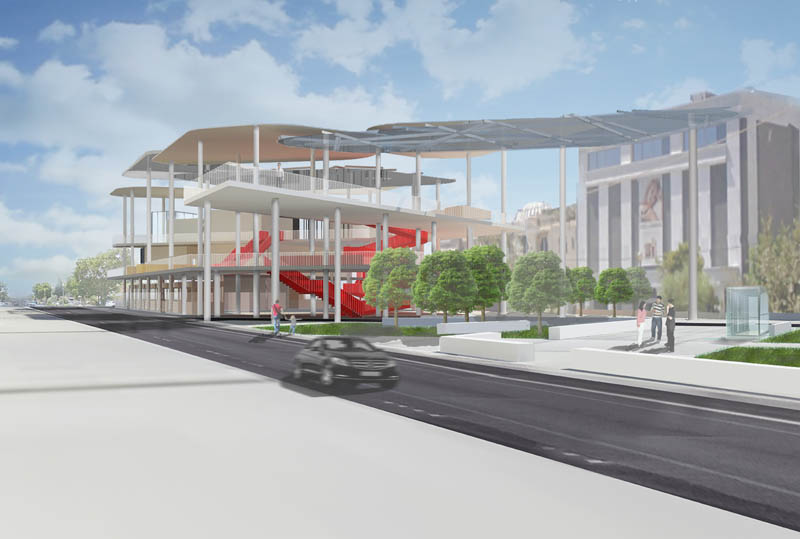

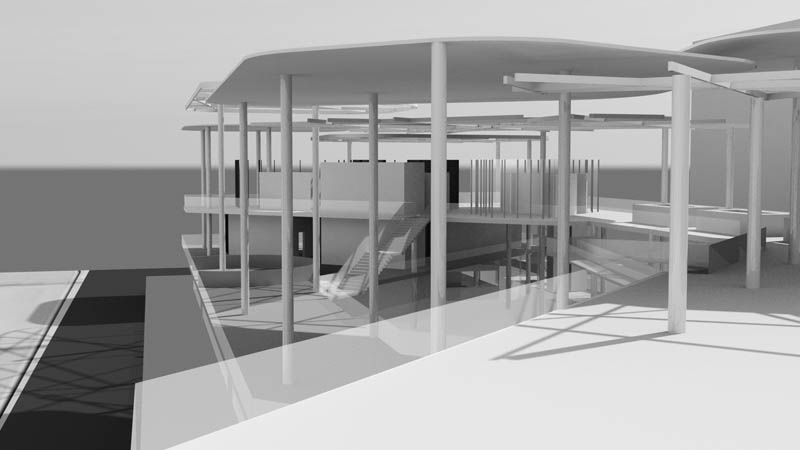

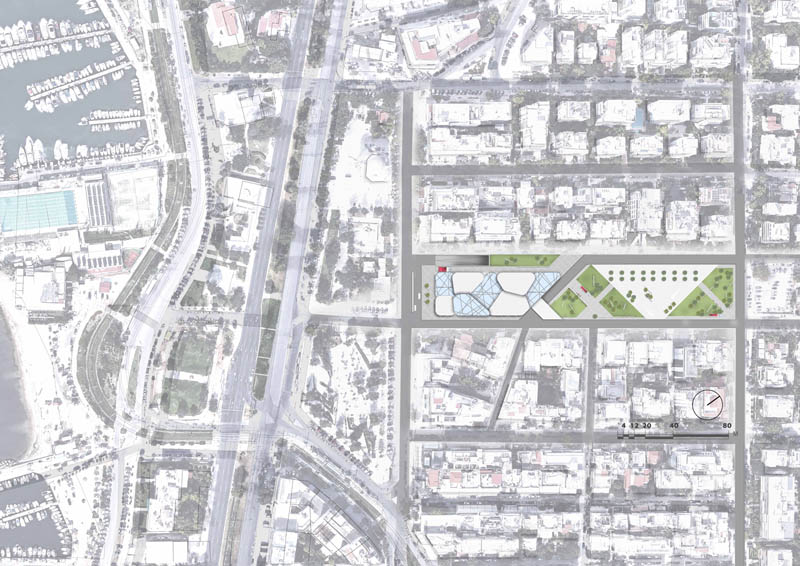

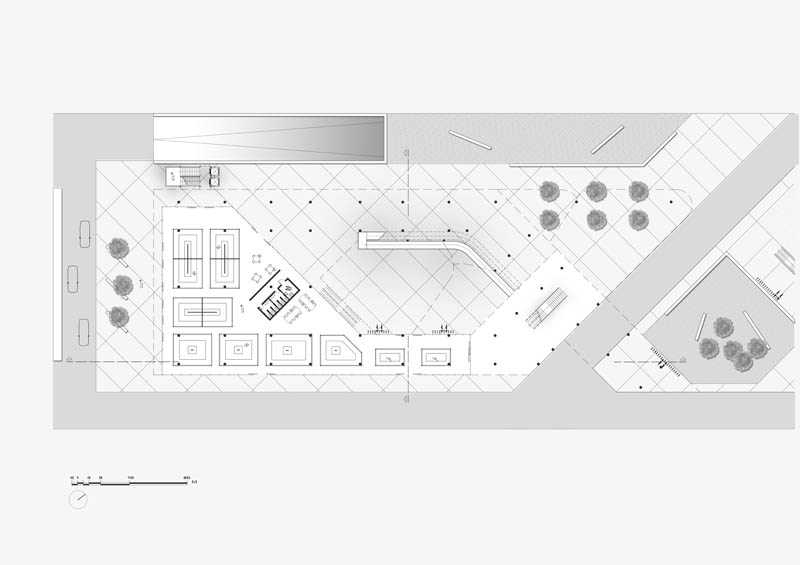

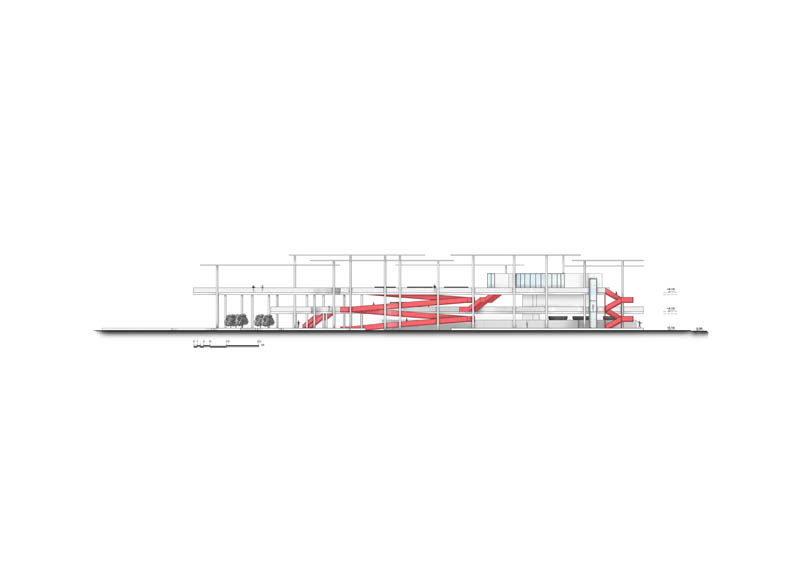

The Athens’ Basin appears as a unified and densely structured special area between the Attic Mountains and the sea front. Green and recreational landscapes are extremely limited. However, the highly valued archaeological sites of the historical city center and some other urban areas stand out. Especially in the last sixty years the urban landscape has expanded enormously around the center of Athens and Piraeus, either with unregulated building constructions, or with the repetition of a carved hemp without any concern for the overall image and functionality of the city. The result of this uncontrolled expansion is the coverage of the whole basin of poor quality architectural apartment buildings and with almost no change in the overall picture.
Glyfada is a seaside suburb of Athens. Morphologically, it differs significantly from most areas of Athens, either in terms of free space exploitation, in urban planning, or in the characteristics of structured space. However, even under these conditions, there are areas of land that are not optimally used and follow the pattern of the rest of Athens that neglects green spaces, areas of natural beauty, entertainment and socialization of the citizens.
The purpose of this project is to intervene to the area of Glyfada, in order to serve the changing needs of its residents, to attract visitors to the area, to improve the functionality of the urban landscape, to increase the entrepreneurship and residence capacity and thus to upgrade it overall, both morphologically and aesthetically. In addition, this project will focus on rejuvenating the social relationships and creating a core of entertainment for the people, which will have an impact across the ages.
Supervisor: Adamakis Kostas
Reference Number: 779


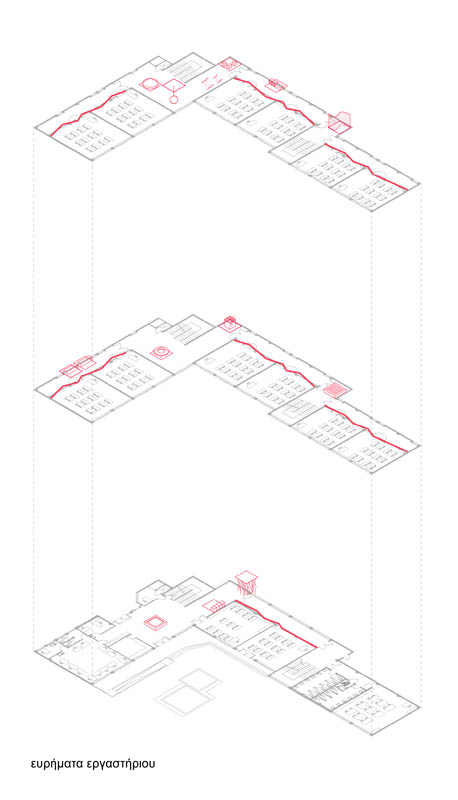

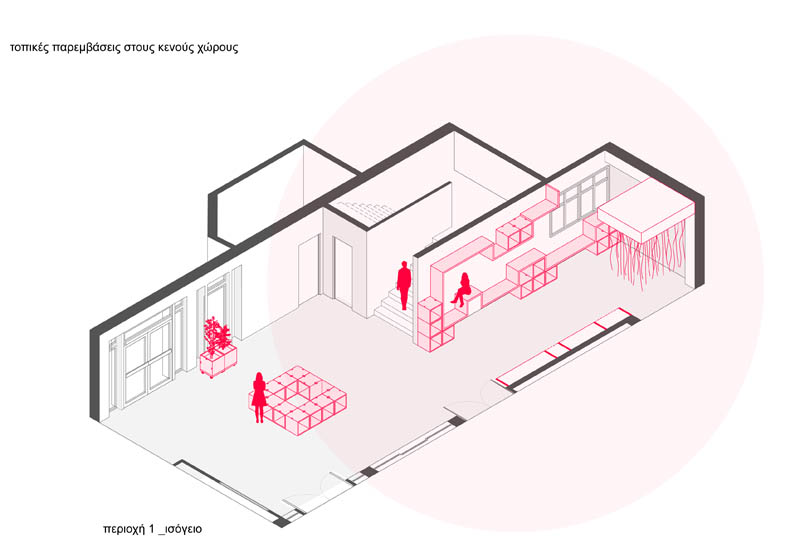

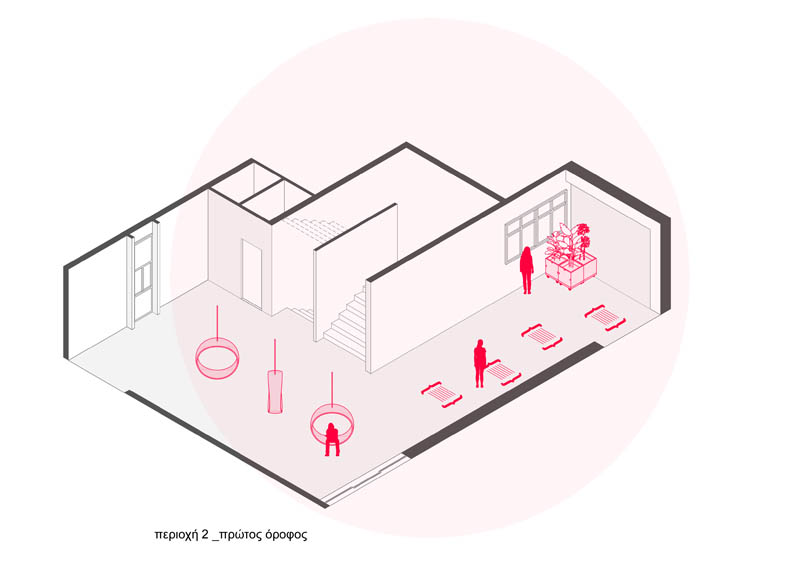

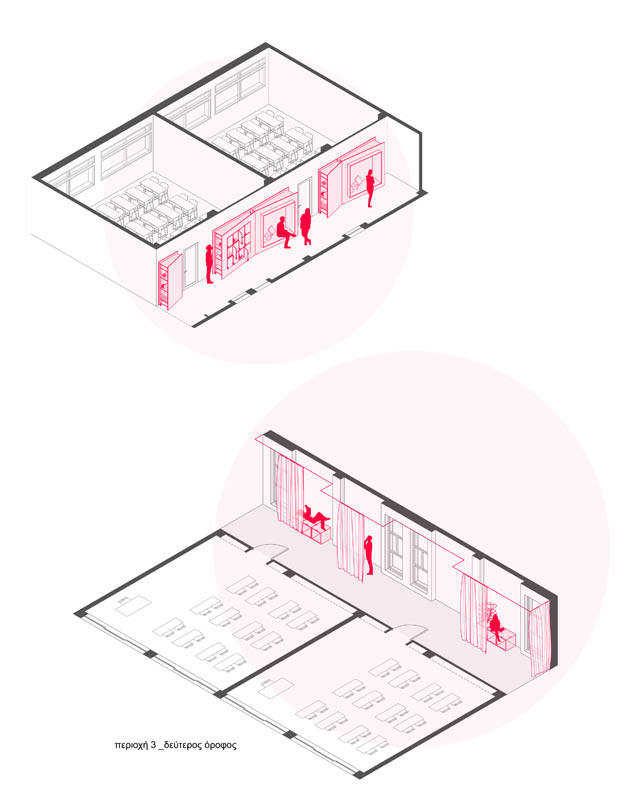

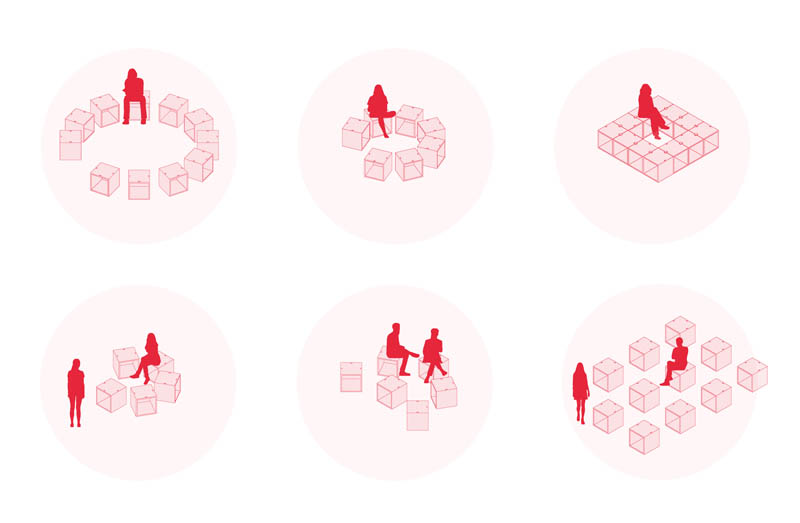

Subject of this thesis is the design of architectural interventions in the 3rd Lyceum of Ilion through participatory processes. The aim is to create an experiment that supports a new treaty (educational, programmatic, morphological) for the transition areas of the 3rd Lyceum of Ilion.
This work follows a dissertation, entitled Learning Environments - a research proposal in 3 parts, that addresses a cluster of sources of inspiration and theoretical support for design. Compiling a system of primary observations, inventing the appropriate tools for detecting the narratives of everyday space users, and articulating design suggestions for the implementation of interventions are the three parts of this study. The study is articulated in three working cycles that represent the mechanisms of the production of space.
The first cycle consists of the initial recordings of spatial expressions and relationships observed. The approach is done through field research at the school. The second cycle focuses on the collection of different narratives regarding the everyday life at school, through three actions that took place at the 3rd Lyceum of Ilion. Workshops are presented in three levels: design, implementation and analysis. The third cycle brings together the architectural design of interventions for the 3rd Lyceum of Ilion. From the graphic analysis of the intermediate spaces to the study of the implementation of the proposals, this chapter concentrates on the architectural production that emerged through the processing filters of the previous two cycles that were presented.
Supervisor: Mitroulias Giorgos
Reference Number: 747


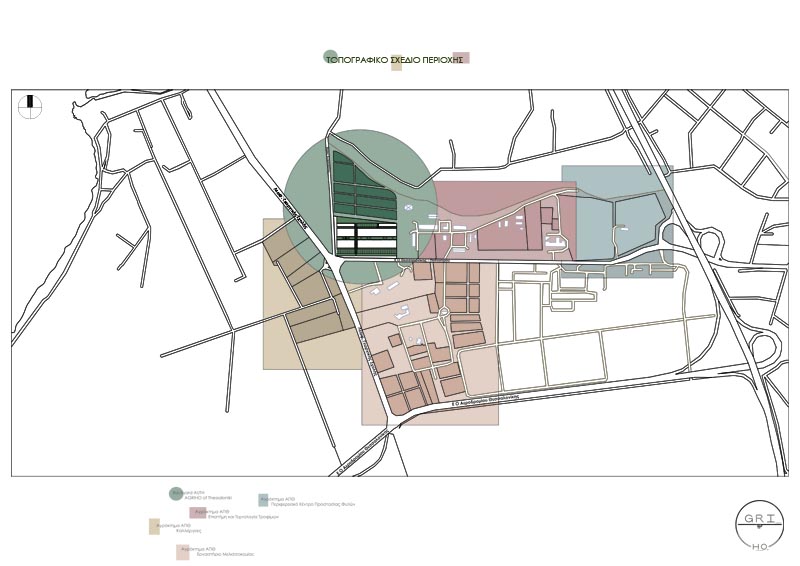

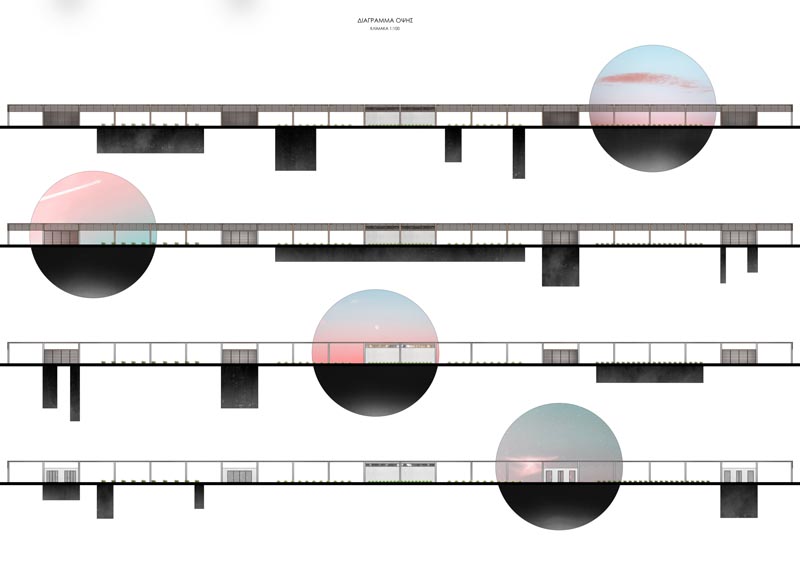

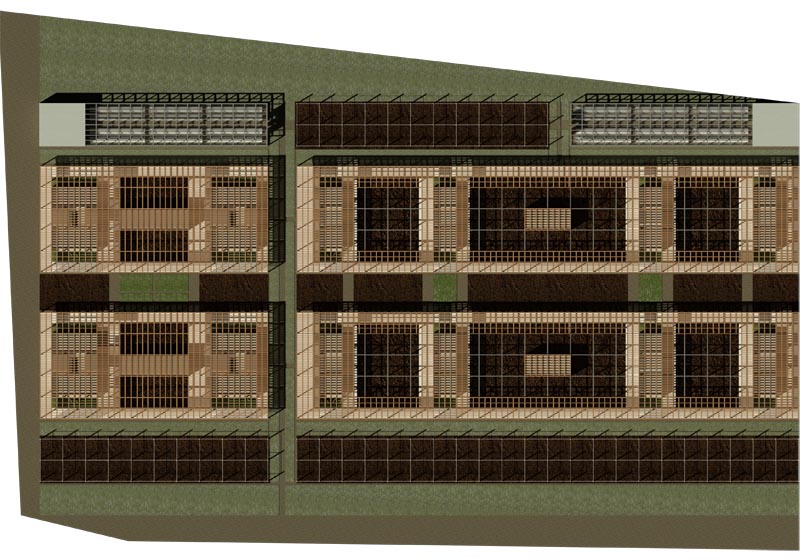

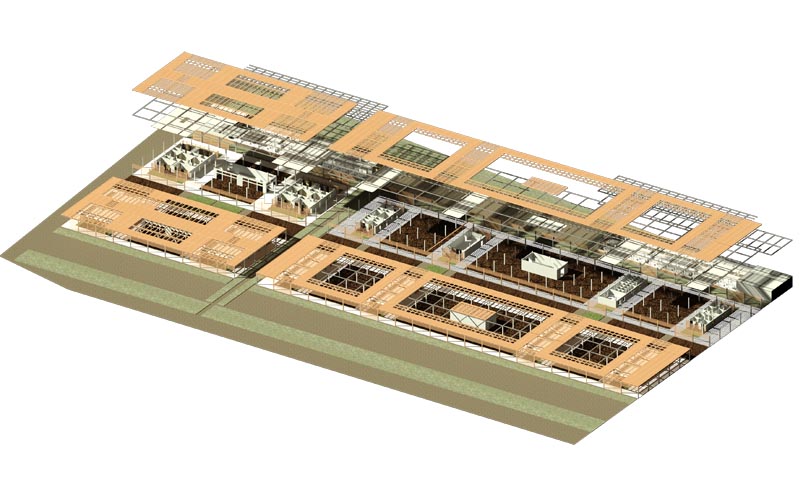

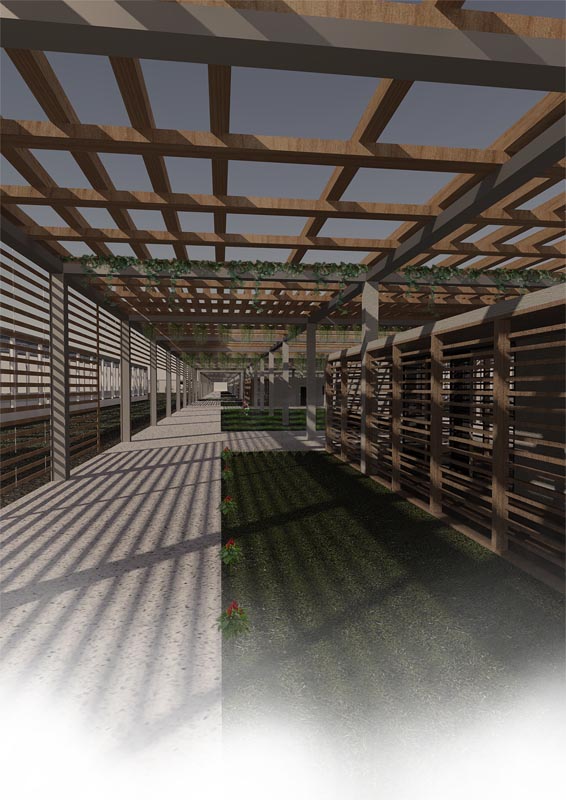

The tourism sector is a key pillar of economic growth in Greece. Land cultivation also contributes to country's economy. In the present thesis, these two factors are combined, collaborating and conversing at AGRIHoT (Agricultural Hotel of Thessaloniki).
AGRIHoT will be characterized as the first Agrotourism hotel in university facilities.It is located on the Farm Agriculture of the Aristotle University of Thessaloniki (airport area) and specifically next to thearea that has been landscaped into organic kitchen Gardens to be rented by citizens of Thessaloniki. This marks the immediate co-operation of the hotel unit with the Farm on both lucrative terms.
The coexistence of residential units, one-story buildings, and arable land, under the "shadow-cover" of large shelters, is considered the main design feature of the hotel. A keystone idea could be the phrase "consume what exists", meaning what is produced in the hotel area and therefore in the Farm Agriculture area.
This hotel is addressed to all tourists who are looking for a natural lifestyle in a pleasant environment. It also covers the needs of hosting both agricultural academics, as well as European Programs and Conferences. In addition, it provides the possibility of a short stay or a short stop for travellers to and from the airport. Finally, it offers accommodation to students of Agriculture practicing on the Farm Agriculture of the AUTH.
AGRIHoT is a fully equipped, both in terms of engineer and cognitive field, Αgrotourism hotel, where ordinary citizens, travellers, agriculturistsand students "coexist" and interact "naturally" under "a large cover".
Supervisor: Mitroulias Giorgos
Reference Number: 769


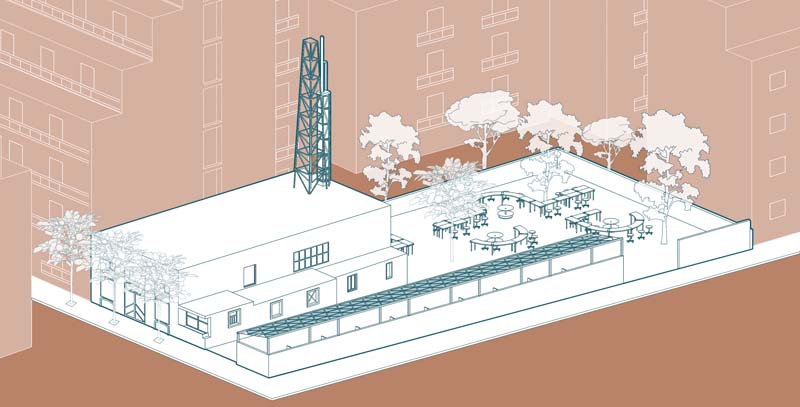

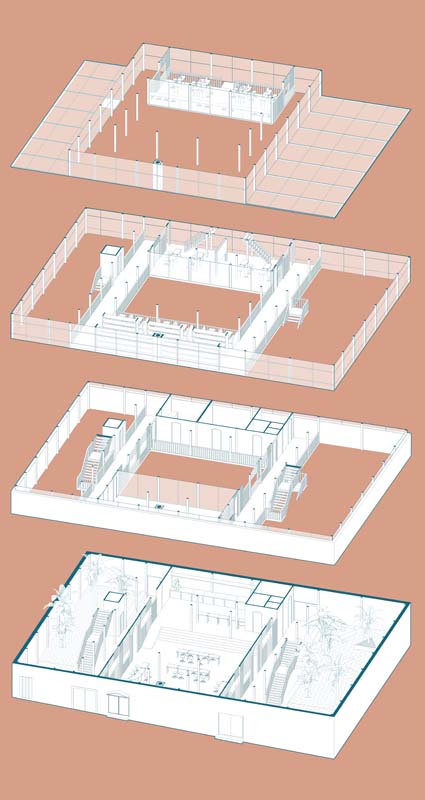

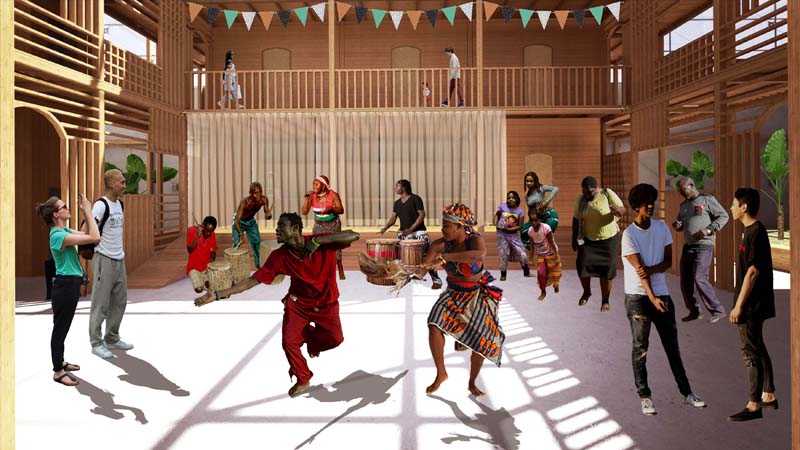

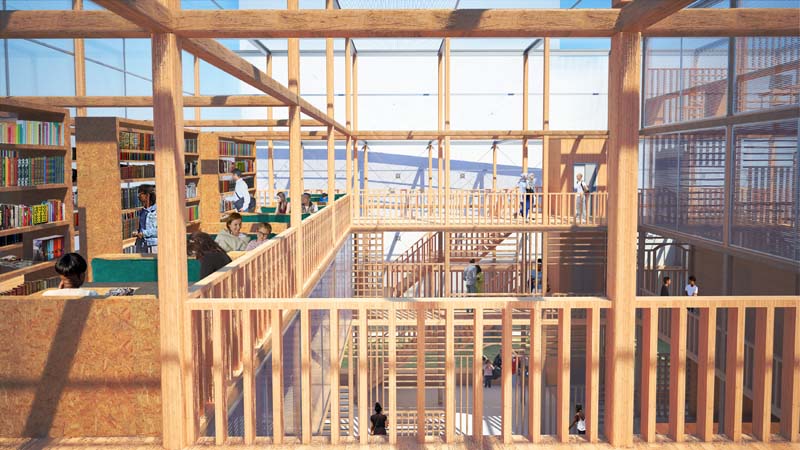

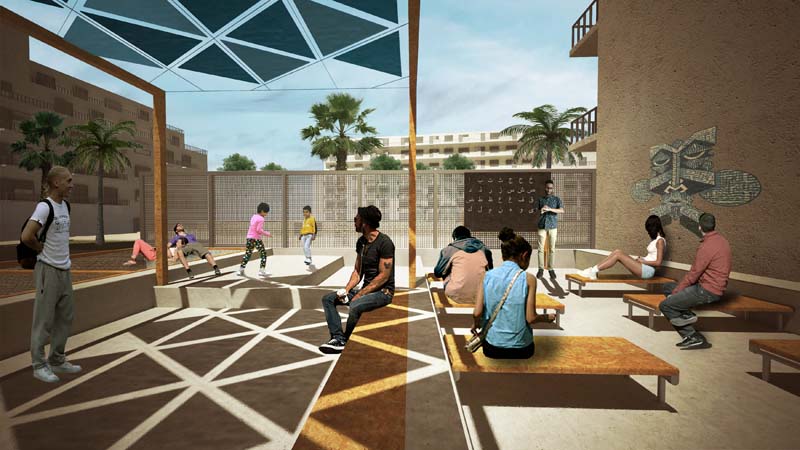

Amerika square (Platia Amerikis) is among the Athenian neighborhoods that have radically changed during the recent past decades in the context of the current social and spatial transformations. The relocation of its older inhabitants and the following abandonment of its stock of buildings, the continuing devaluation of the public space as a consequence of the crisis, its transformation in a migrant neighborhood and the reuse of its empty flats and shops are some of the elements composing the image of a neighborhood with many problems but also with great potential. Τhat is to say, it’s all about a neighborhood which is considered to be “downgraded” but at the same time is alive, multicultural and diverse.
Our approach focuses on the dynamics emerging through the coexistence of nations and cultures and the way the latter are expressed in the public sphere. For this purpose, initially, we came into contact with the migrant communities, other social groups and other individuals inhabiting the area. All of them, through their everyday practices contribute to the shaping of the neighborhood’s identity. Ιn view of the needs and the desires of the latter, we developed our proposal.
Our proposal concerns the designing of a multipurpose space (community center) which could house the activities of the migrant communities and of the artistic and cultural collectivities of the area, thus creating the proper conditions for the development of new. In this new space, group meetings, collective meals, festivities, cultural events, classes and collective workshops could take place. Ιn the meanwhile, in order to strengthen and spread the abovementioned activities to the rest of the neighborhood we suggest that during the summer months the latter should go beyond the confines of this particular space and take place in other three outdoor spaces gradually transforming into a community festival. The four spaces that we choose to intervene in/activate are located along Mythimnis street in between Amerikis square and Acharnon street.
We believe that a complex program such as the one described above, which includes both a permanent structure available to the inhabitants of the neighborhood and also a set of temporal activities open to the rest of the city, could contribute to the strengthening of the community bonding and to the promotion of the public visibility of multinational groups.
Supervisor: Mitroulias Giorgos
Reference Number: 724


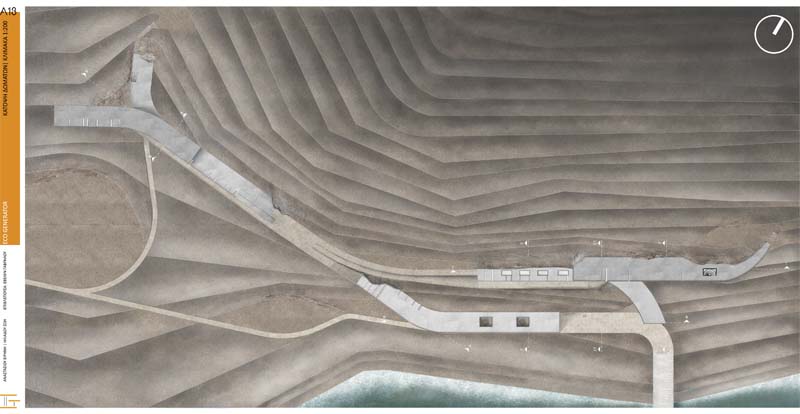





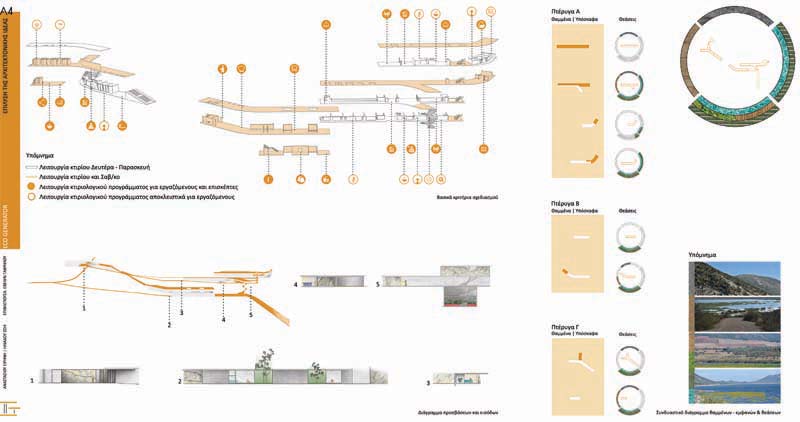

Imagine an extraordinary natural scenery, such as a lake full of water lilies. What would happen if apart from being an observation and roaming spot, it could be exploited as a field of research, education and information?
Not far from the city of Athens, in district of Viotia, one comes across with an unknown,S for the time being, down to earth paradise. Lake Paralimni, has all the characteristics of a species-rich ecosystem and is worthily listed in Natura 2000. The importance of the lake’s biodiversity is proved by, among other reasons, the existence of water lilies and the nests of storks, which create a mesmerizing scenery with the capability to support a variety of activities. On the other hand, the occasional water pumping in order to support the needs of Athens and Chalkida, the increasing number of cultivation fields and the amateur fishing, lead in the gradual degradation of Paralimni. Focusing on the threats and aiming to solve them, we suggest the construction of units whose facilities have as a result the increase of the local fish population and simultaneously they can be involved in educational and entertaining happenings. Keeping natural paths to move around the place, the Center is open both on the week days and weekends, while the building program responds to many events and for a wide range of visitors, since volunteers, scientists, students could explore the hidden treasures of the lake and experience the feeling of ecotourism. The height distribution of the volumes, transforms them into a climbing game that gives the opportunity to the visitors to take advantage of every single spot of beauty, always with care and respect for the surroundings.
The designing process took place under the idea of an intervention “ IN THE LANSCAPE FOR THE LANDSCAPE”.
Supervisor: Gavrilou Evelyn
Reference Number: 751
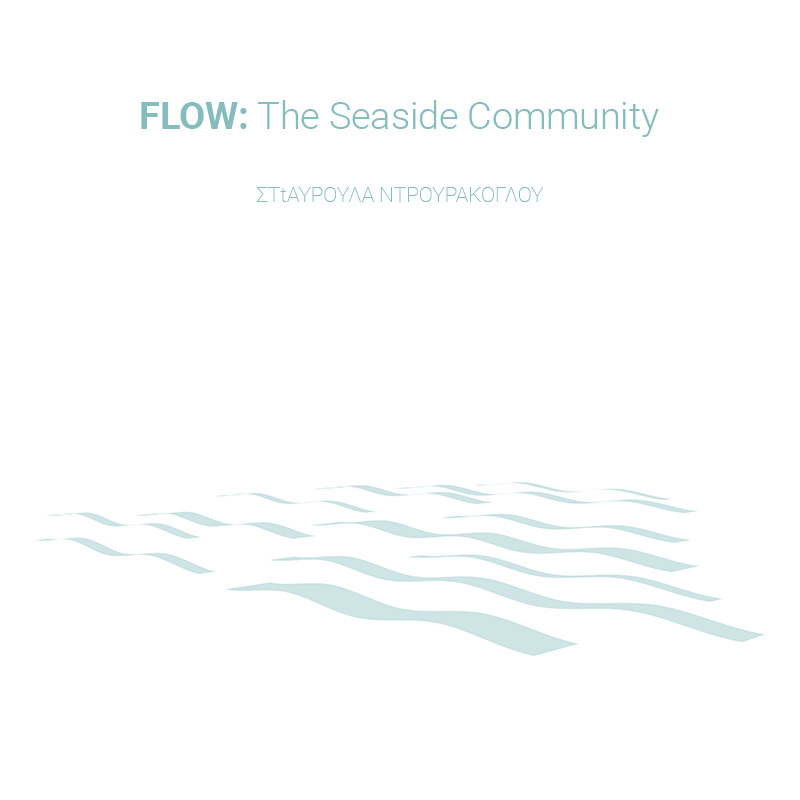

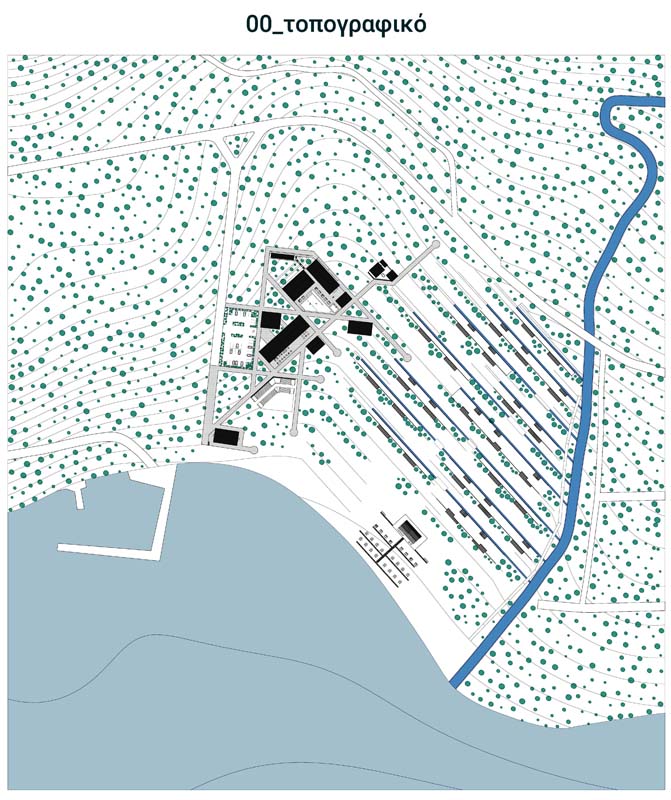

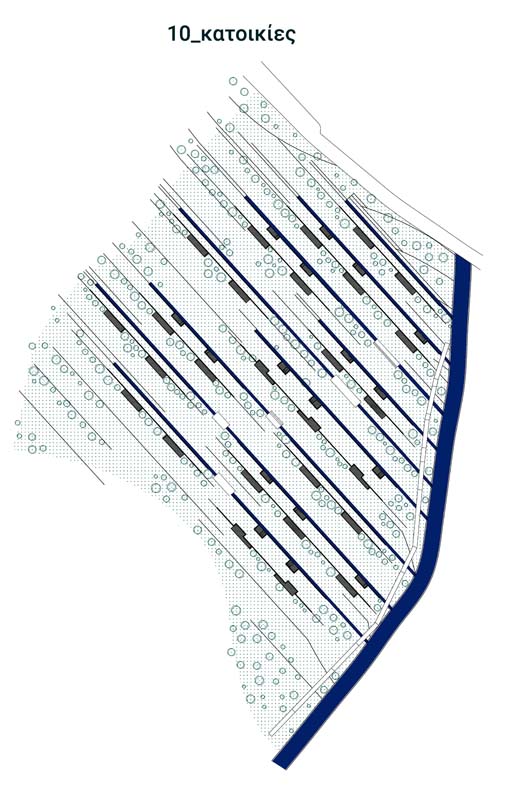

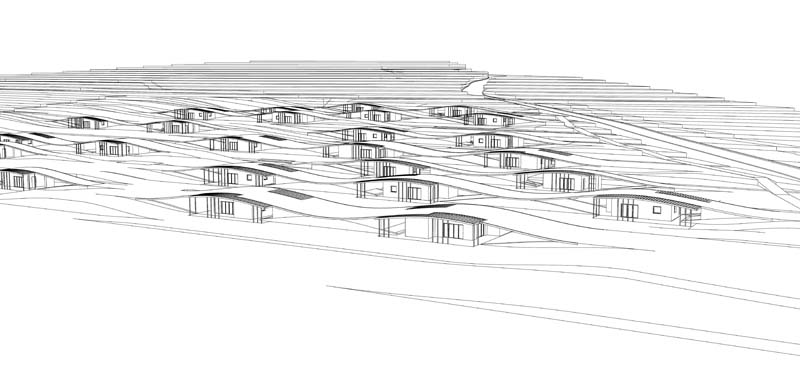

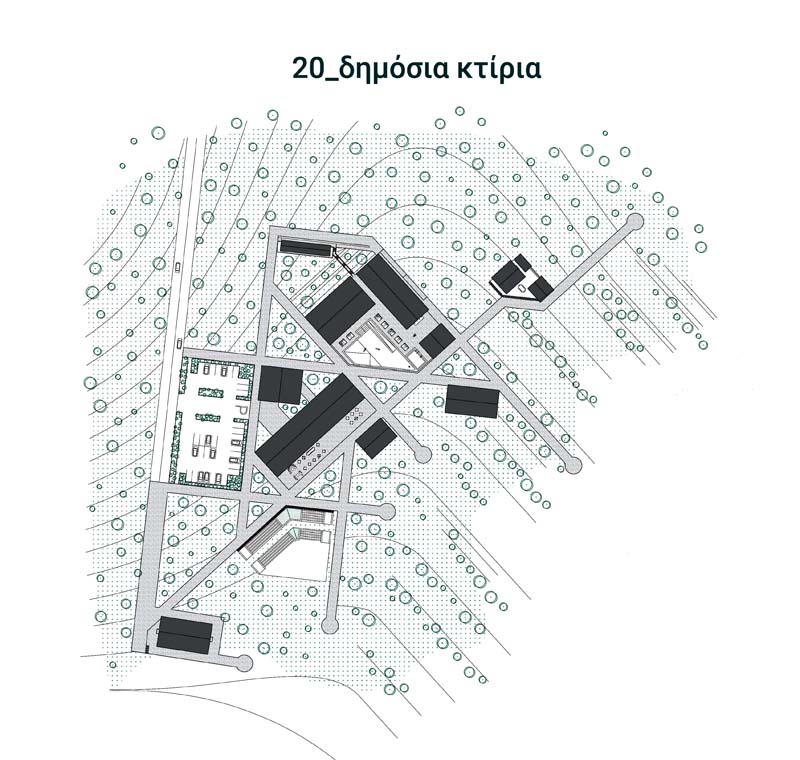

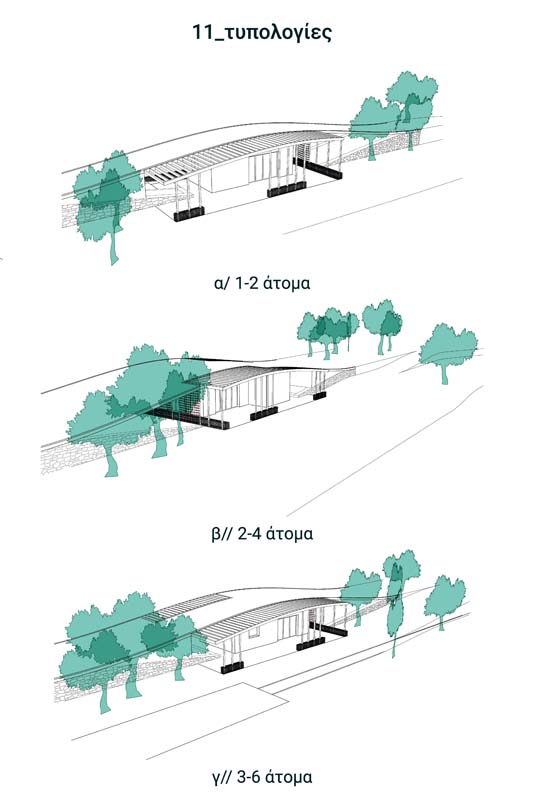

This project presents a community by the sea, near Kala Nera in Pelion. The purpose of this com- plex is the access to all areas and to satisfy the expectations of its customers. Equal treatment and the ability of all to participate in all activities is the key element of planning.
The complex has twenty-seven (27) houses, overlooking the sea and the mountain of Pelion, suitable even for disabled people. Rooms feature a large entrance door, spacious rooms for easy access and transit for all of their occupants, as well as bathrooms with showers and basins used by people with disabilities. It is possible to install a temporary emergency kitchen upon request from the tenants.
All houses are on the ground floor and have an outdoor courtyard with pergola shaded area. On the perimeter of the houses there is water installations, which originate from the stream located to the southeast of the plot, with the aim of cooling the houses and creating a microclimate reduced by up to 2°C.
In the complex it can be found sports and leisure facilities such as the amphitheater, workshops and playroom, dining, bar and restaurant, spa and fitness area, as well as first aid facilities with a medical clinic and pharmacy. The building, which houses the indoor pool, spa and fitness center, has special treatment and care facilities such as massage, hydrotherapy and steam baths that are governed by design rules which make them suitable for everyone. In addition, there is secure parking area for occupants and guests of the premises.
All spaces are accessible to everyone. In fact, all of the tenants can access the pool by the spe- cially designed ramp for disabled people, which also features a walking system for the visually impaired people.
Supervisor: Kanarelis Theoklis
Reference Number: 761


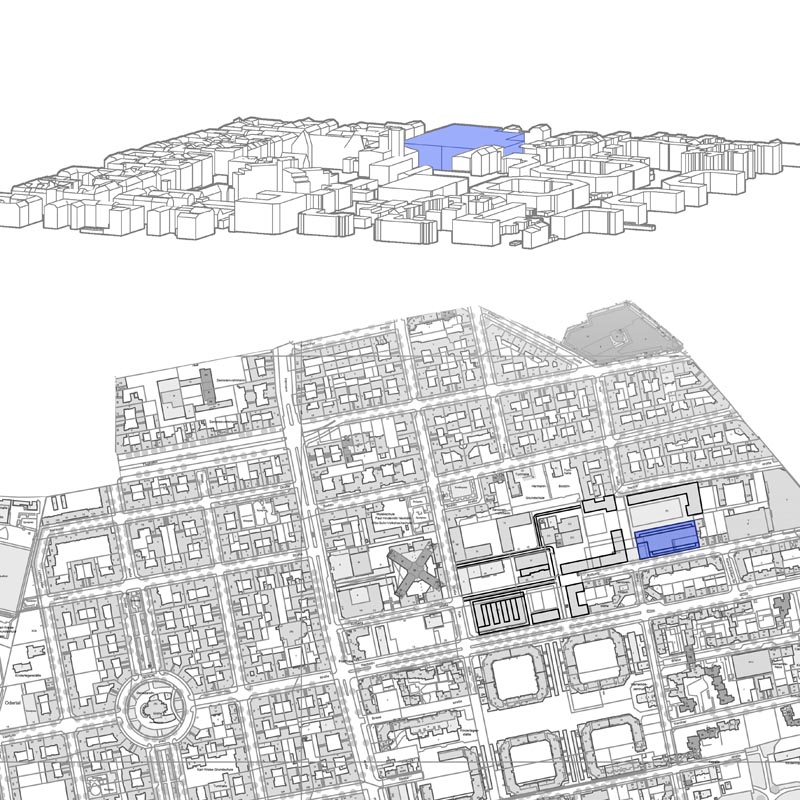

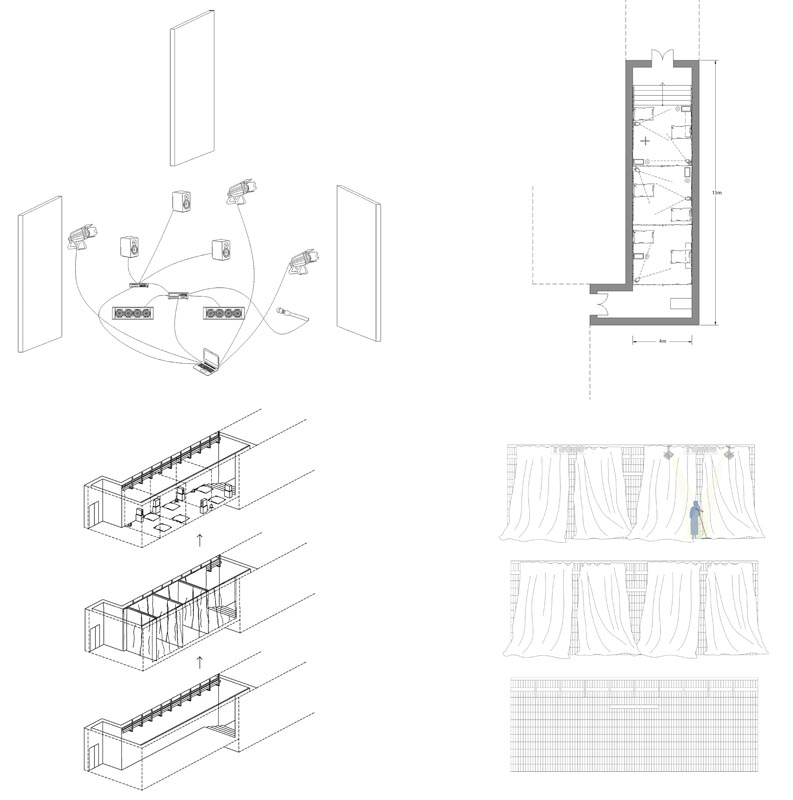

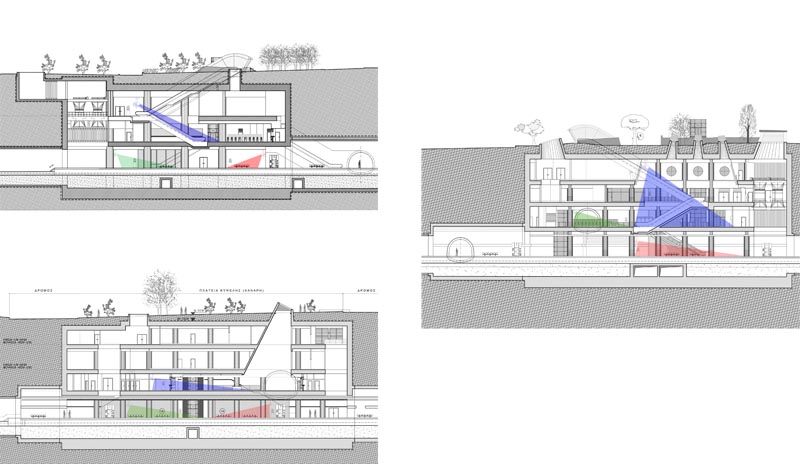

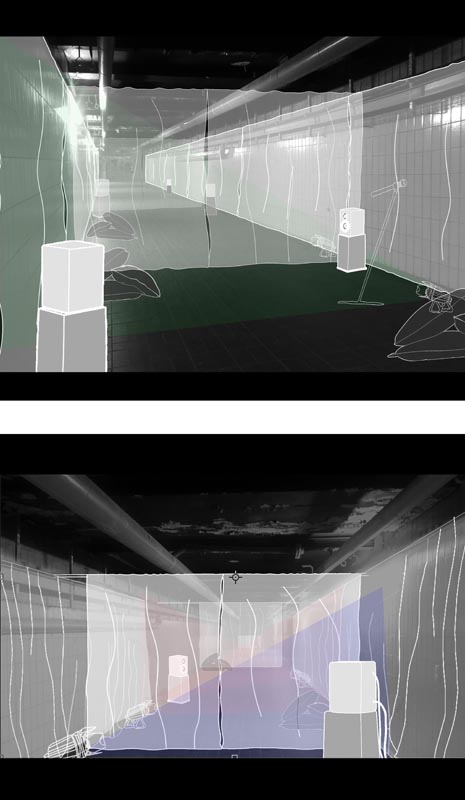

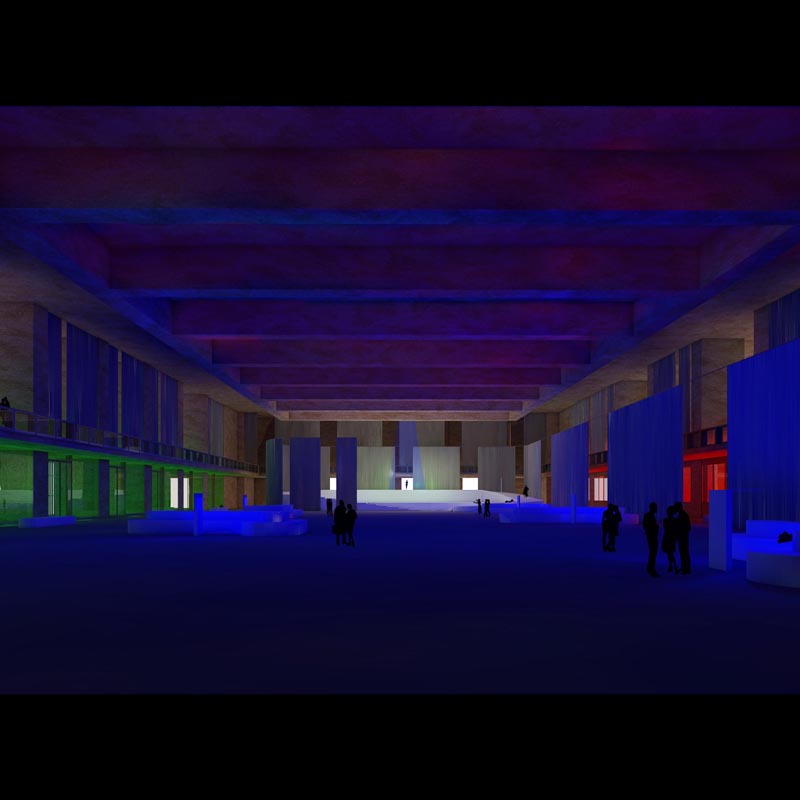

The starting point of my field of research was to examine the alterations in the contemporary way of living, due to the use of New Media and Technology by the individuals, that move and act inside the urban, public network. Always in sync with their virtual identities, the subjects create paths, while receiving and sharing information, using applications of different kinds and with various characteristics, sharing data/aspects of themselves that are no longer considered as “private”, and are continuously perceived and criticized by other “connected” users, through their own, subjective perspectives.
This aforementioned hectic reality, is frequently “interrupted” or intruded by artworks in the form of performances/ambiences/installations that are placed inside the urban environment. Art in the public space offers “spots of decompressions” to the subjects that, for a little while, get to experience an alteration of rhythm caused by imagery, lights, sound, creating a parallel, possibly calmer reality.
I set up an audiovisual installation/performance (Fuga A Tre Voci), inside Studio 59, in Neukölln, Berlin. I composed a sound piece, based on the form of the exposition of a fugue that was later on synchronized with light effects adding color and pulse to my ambience that was also enhanced by a vocal improvisation that I performed during the event.
The second part of the project, was to design the alterations of my atmosphere, in order for it to be placed in two different spots inside the city of Berlin. The first one was an underground corridor, part of a former brewery, in Neukölln, that would offer the opportunity for the project to be once more presented in a similar scale with the one in the studio, but with significant variations, always preserving elements that I thought were successful in my first live attempt. The second space that I chose to use as a setting for Fuga, was the main entrance hall of Tempeh of Airport (no longer in use), in a scale much larger, that would force the project to “expand” in a way to become suitable for the very large interior space.
Supervisors: Psychoulis Alexandros, Remy Nicolas
Reference Number: 768


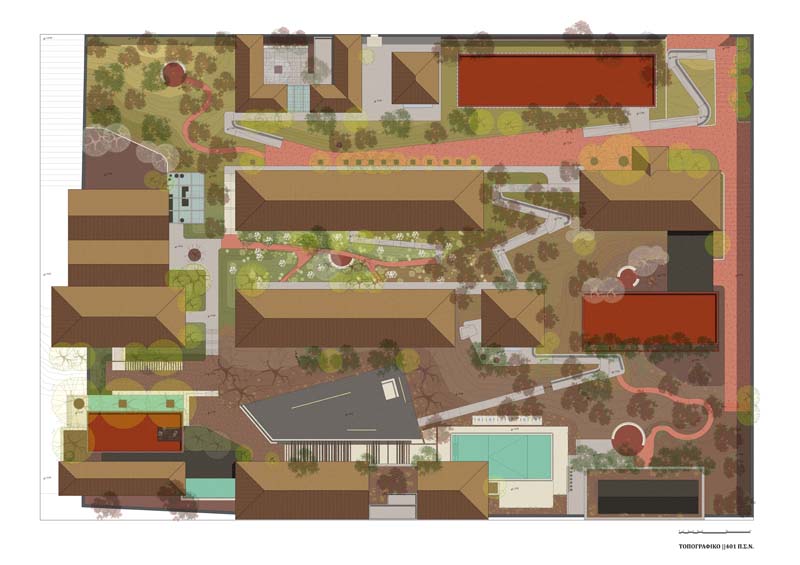

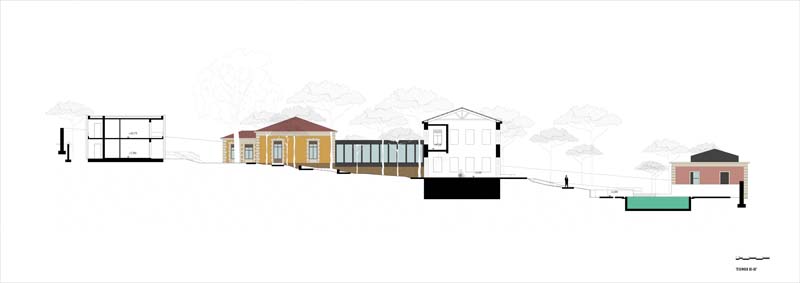



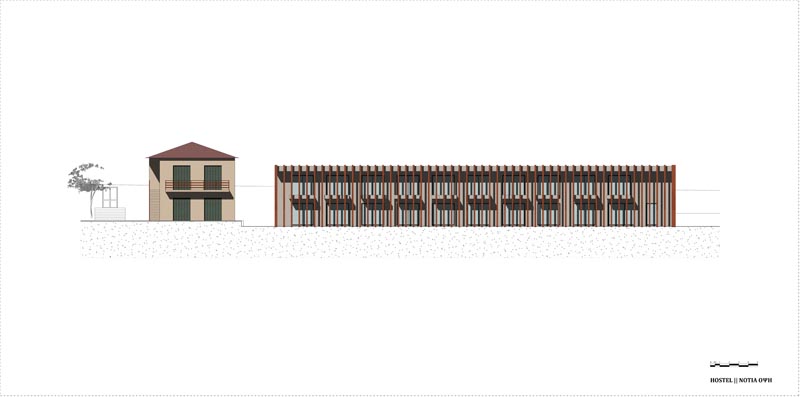

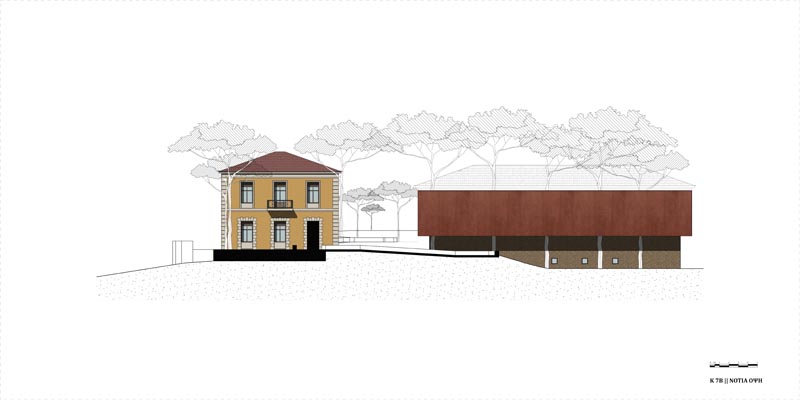

The current thesis proposes the establishment of a Rehabilitation Center and Baths on the plot of the 401 Former Military Hospital.
On the slope of Lycabettus, at the corner of Deinokratous and Iatridou street, was situated and functioned from 1897 until 1971 the 401 General Military Hospital. In 1971 the plot and its 14 buildings were passed over to the Church of Greece and nowadays its buildings are abandoned and its grounds have turned into parking space.
Recognising the significance of the space - both historical and architectural- it is suggested that the buildings are restored and the area reactivated. After taking into consideration the existence of numerous hospitals in the area, it is proposed that the existing buildings take over the program of a Rehabilitation Center. This use allows for only minor interventions at the existing buildings, 7 of which are listed. The complementary use of Baths with an autonomous entrance from Iatridou Street, as well as a small Hostel for the accommodation of medical tourists is also suggested as part of the new program.
In order to cover the requirements of the new program, new buildings have to be constructed. These obey the grid formed by the existing ones, as well as their basic form. Considering the facades though, the new buildins are much less decorated than the existing neogothic and neoclassical ones. The new constructions can be grouped into two main categories, the ones that are made of a metal frame and glass and are in contact with the old ones and the monolithic constructions with an external shell from corten panels.
Finally, the current thesis includes a proposal for the open-air spaces of the plot. The main idea is that the ground is formed as an expansion of Lycabettus hill inside the boundaries of the plot and thus that this is turned into a Hortus Conclusus.
Supervisor: Mitroulias Giorgos
Reference Number: 770

